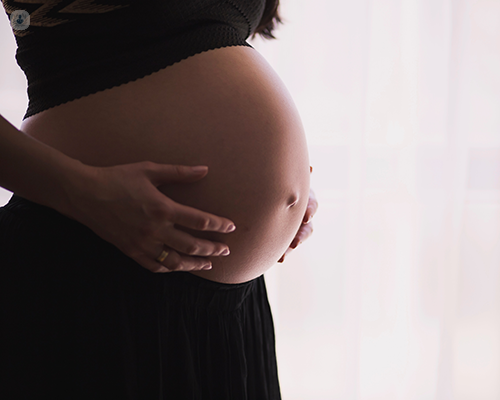Multiple pregnancy: Monitoring, delivery, and newborn care
Autore:A multiple pregnancy occurs when a woman is pregnant with two or more babies at a time. While twins are the most common, triplets and higher-order multiples are also possible.
We spoke to Dr Koon Loong Chan, highly esteemed Consultant Obstetrician and Subspecialist in Fetal and Maternal Medicine, about multiple pregnancies, addressing the joys, questions and considerations for both mother and babies.

What increases the likelihood of a multiple pregnancy?
Several factors can increase the likelihood of a multiple pregnancy:
Genetics: A woman with a family history of multiple pregnancies has a higher chance of carrying multiples herself, especially if there is a family history of non-identical twins.
Age: Women over the age of 30, particularly those aged between 35 and 40, are more likely to conceive twins or higher-order multiples. This is due to hormonal changes that can lead to the release of more than one egg during ovulation.
Fertility treatments: Fertility treatments, such as in vitro fertilisation (IVF), increase the chances of a multiple pregnancy. These interventions often involve the stimulation of the ovaries to release multiple eggs or the implantation of more than one embryo.
Finally, if a woman has previously had a multiple pregnancy, the chances of having another increase with later pregnancies.
Are multiple pregnancies high-risk?
Yes, multiple pregnancies are generally considered high-risk due to the increased chances of complications for both the mother and the babies:
Preterm birth and low birth weight: The likelihood of preterm labour is higher in multiple pregnancies, often before week 37. Babies born prematurely are often born with a low birth weight, which can lead to an increased risk of health problems.
Twin-to-twin transfusion syndrome (TTTS): TTTS can occur in identical twins sharing a placenta if there is an unequal distribution of blood between the twins. This condition requires close monitoring and, in some cases, medical intervention.
Gestational diabetes and pre-eclampsia: Women carrying multiple pregnancies are at a greater risk of developing gestational diabetes and pre-eclampsia (high blood pressure during pregnancy). Both conditions require close monitoring and management.
Placental issues: Multiple pregnancies can increase the risk of placental complications, such as placental abruption (where the placenta detaches from the uterus) or placenta previa (where the placenta covers the cervix), which can cause complications during delivery.
How is a multiple pregnancy monitored?
Women with multiple pregnancies require more frequent ultrasound scans and antenatal visits to ensure that both the mother and the babies are doing well. The primary method of monitoring multiple pregnancies is through ultrasound scans.
In the early stages, ultrasound scans determine the type of twins the mother is having and whether they share a placenta or not (identical or non-identical) as this will determine the management in the pregnancy.
As the pregnancy progresses, mothers carrying twins with separate placentas (non-identical twins) typically have ultrasounds every 4 weeks from 20 weeks to monitor the growth problems. For mothers carrying twins with a single placenta (identical twins), ultrasound scans are performed every 2 weeks from 16 weeks to monitor for conditions like TTTS and growth problems. Pregnancies involving triplets or higher-order multiples require even more frequent closer monitoring.
Additional tests are performed to check on the mother’s health with regular monitoring of blood pressure, urine tests and, sometimes, blood tests to assess for anaemia, gestational diabetes and pre-eclampsia.
What are my options for delivery?
The delivery of a multiple pregnancy depends on several factors including the health of the mother and the babies’ gestational age, growth and position in the womb.
In twin pregnancies, a vaginal birth may be possible if the first twin is in a head-down position.
For triplets or higher-order multiples, a planned caesarean is usually recommended to minimise risks to both the mother and the babies. Non-identical twins are typically delivered around 37 weeks, identical twins around 36 weeks and triplets are usually delivered around 35 weeks. Higher-order multiples are delivered earlier than this.
Will my babies require special care after birth?
Babies born from multiple pregnancies often require extra care after birth, especially if they are born prematurely or have a low birth weight. Premature babies may need to stay in a Neonatal Intensive Care Unit (NICU) for assistance with breathing, feeding and monitoring of their vital signs. Babies with low birth weight will require additional support to ensure proper nutrition and a stable body temperature.
Ultimately, the need for NICU care will depend on the individual circumstances of the pregnancy. The majority of these babies will go on to thrive and grow up without long-term complications.
If you would like to book an appointment with Dr Chan, head on over to his Top Doctors profile today.


